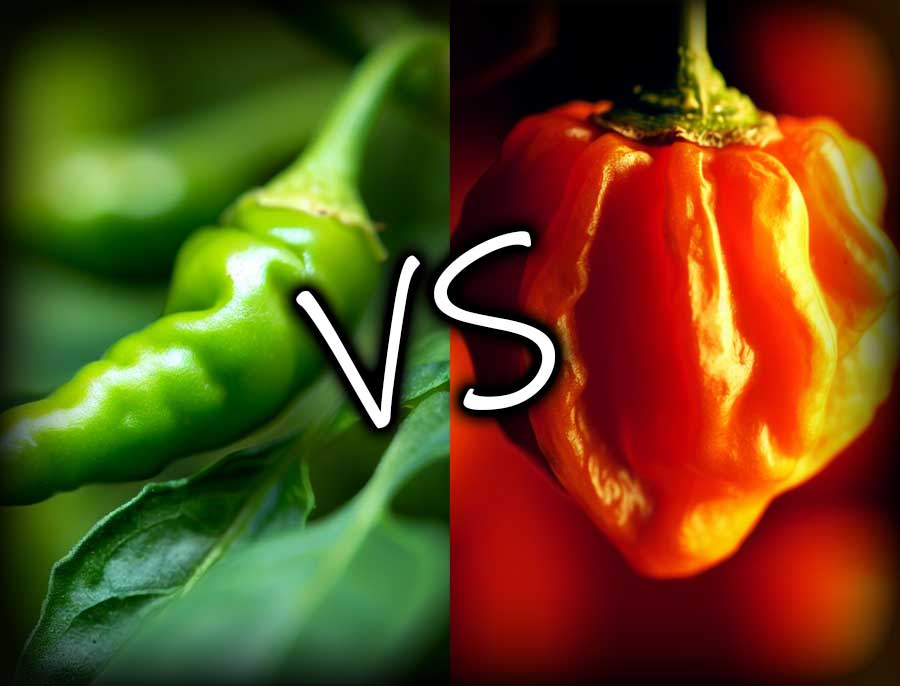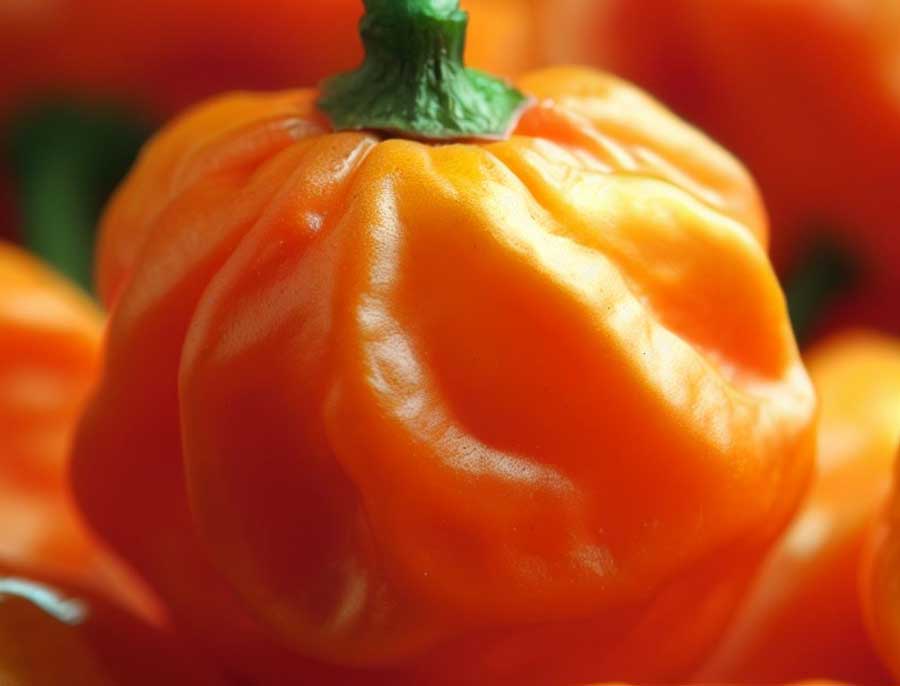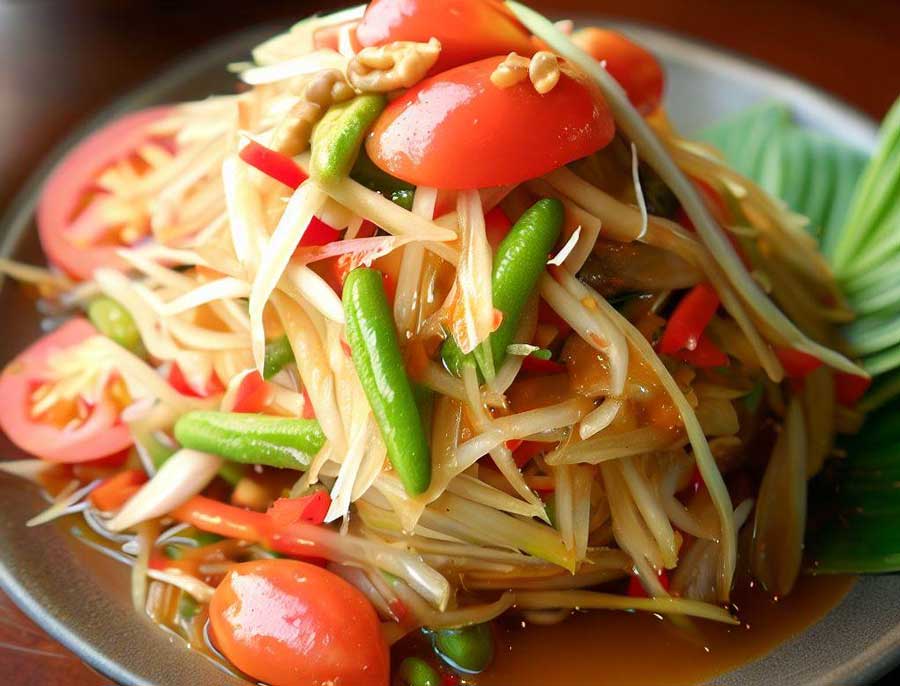Thai chilli peppers and habanero peppers are both known for their spiciness and are used in various cuisines worldwide. However, they have distinct differences in terms of appearance, flavour, heat level, and culinary uses. Even though they are both chillies, they are very different. With that being said, let’s do a comparison, Thai chili vs Habenero.
1. Appearance:
Thai Chili (Bird’s Eye Chili): Thai chillies are small, slender, and typically about 1-2 inches (2.5-5 cm) in length. They are usually bright red or green when ripe, and they have a thin, pointed shape.
Habanero: Habanero peppers are slightly larger, typically 1-2.5 inches (2.5-6.5 cm) long, and they have a distinctive lantern-like shape. They can vary in colour from green to orange, red, or even brown.
2. Flavour:
Thai Chili: Thai chillies are known for their sharp, intense heat with a clean, crisp flavour. They provide a quick, fiery kick and are often described as having a slightly grassy or citrusy undertone.
Habanero: Habaneros have a fruity and floral flavour with a more pronounced sweetness compared to Thai chillies. Their heat tends to linger, providing a complex spiciness with a hint of tropical fruitiness.
3. Heat Level:
Thai Chili: Thai chilies are hot, typically ranging from 50,000 to 100,000 Scoville Heat Units (SHU). However, they can sometimes reach even higher levels on the Scoville scale, making them quite fiery.
Habanero: Habanero peppers are among the hottest chilli peppers globally, with a range of 100,000 to 350,000 SHU. Some varieties can even surpass 350,000 SHU, making them significantly hotter than most Thai chillies.
Here’s a table of the Scoville Heat Scale, which measures the spiciness or heat of chili peppers and other spicy foods, listed from mildest to hottest:
| Pepper/Variety | Scoville Heat Units (SHU) |
|---|---|
| Bell Pepper (0 SHU) | 0 |
| Pimento Pepper (100-500 SHU) | 100-500 |
| Banana Pepper (0-500 SHU) | 0-500 |
| Anaheim Pepper (500-2,500 SHU) | 500-2,500 |
| Poblano Pepper (1,000-2,000 SHU) | 1,000-2,000 |
| Jalapeño Pepper (2,500-8,000 SHU) | 2,500-8,000 |
| Chipotle Pepper (2,500-8,000 SHU) | 2,500-8,000 |
| Serrano Pepper (10,000-23,000 SHU) | 10,000-23,000 |
| Cayenne Pepper (30,000-50,000 SHU) | 30,000-50,000 |
| Tabasco Pepper (30,000-50,000 SHU) | 30,000-50,000 |
| Thai Chili (50,000-100,000 SHU) | 50,000-100,000 |
| Habanero Pepper (100,000-350,000 SHU) | 100,000-350,000 |
| Scotch Bonnet Pepper (100,000-350,000 SHU) | 100,000-350,000 |
| Ghost Pepper (Bhut Jolokia) (855,000-1,041,427 SHU) | 855,000-1,041,427 |
| Carolina Reaper (1,641,183-2,200,000 SHU) | 1,641,183-2,200,000 |
Please note that these heat ranges can vary depending on factors such as growing conditions and individual pepper variations. The Scoville Heat Scale provides a general idea of the spiciness of chili peppers, with higher SHU values indicating hotter peppers.
4. Culinary Uses:
Thai Chili: Thai chillies are a staple in Thai cuisine, where they are used to add spiciness and flavour to dishes like curries, stir-fries, soups (such as Tom Yum), and salads (like Som Tum). They are often used whole, sliced, or pounded into pastes.
Habanero: Habanero peppers are popular in Latin American and Caribbean cuisines. They are used in hot sauces, salsas, and marinades, and as a way to add intense heat to dishes. Habaneros are also employed in some international dishes that require extreme spiciness.
TLDR; Thai Chili vs Habanero
While both Thai chillies and habaneros are known for their heat, they have distinct flavours, appearances, and culinary uses. Thai chillies are favoured for their intense, clean spiciness in Thai dishes, whereas habaneros bring a unique fruity and floral flavour along with their fiery heat to Latin American and Caribbean cuisines. The choice between them depends on the specific flavour profile and spiciness level desired in a particular dish.



